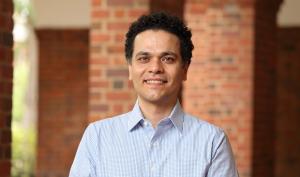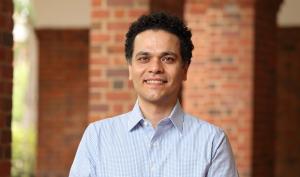
If there is one truth in cancer research, it’s that nothing about the disease is as straightforward as it might initially seem.
A case in point:
As far back as the early 1980s, the discovery that oncogenic mutations drive specific cancer lineages promised to revolutionize cancer therapy. The thinking was that if you could develop a therapy that targets a driver oncogene or a component of its effector pathway, then you could stop a growing tumor in its tracks.
But it wasn’t so simple. Researchers and clinicians began classifying cancer patients by the specific mutations driving their tumors, only to find that the therapies developed to block specific oncogenes did not work as well as expected.
They learned that patients with similar mutations responded differently depending on their tumors’ tissue of origin. Even patients with tumors at the same tissue site didn’t respond the same.
Mohammad Fallahi-Sichani, an assistant professor in UVA’s Department of Biomedical Engineering, however, has a strategy for unraveling the complexity. Last year, he moved his lab from the University of Michigan to the University of Virginia, in part, he said, because UVA is a great place for a cancer systems biologist to take on a complex challenge.
Tumors are a mix of cells in different states of development. In melanoma, they range from undifferentiated cells to highly pigmented cells that proliferate rapidly. BRAF/MEK inhibitors work better in melanomas with a high percentage of pigmented cells—much worse in tumors dominated by undifferentiated cells. Ultimately, however, even pigmented cells acquire resistance to BRAF/MEK inhibitors.
Fallahi-Sichani works to determine why intrinsic resistance varies by tissue type and cell stage, why acquired resistance appears even in those cell types that are initially vulnerable to inhibitors, and what can be done to increase inhibitors’ effectiveness.
His assumption is that these mechanisms of resistance have an epigenetic origin — that is, they are caused by modification of gene expression rather than alteration of the genetic code itself.
He explained that, typically, cancer cells will escape a targeted drug intended to block a pathway by activating an alternative pathway. As a result, the cells survive and grow.
Fallahi-Sichani believes the cancer cells’ ability to make a specific adaptation is not random but determined by the characteristic kinds of epigenetic activity — in particular, enzyme-induced changes in the chromatin structure that surrounds and packages DNA. These changes, which produce gene expression, vary by tissue lineage and cell state.
In other words: It’s complicated. But if he can identify key enzymes that alter the chromatin structure, he will have a target for therapy — albeit a moving target since different enzymes are activated as cells evolve.
Because of the complexity and variety of epigenetic activity, Fallahi-Sichani uses a range of tools in his analysis. With funding from the National Institutes of Health, the U.S. Department of Defense and private foundations, Fallahi-Sichani employs chemical epigenetic screening, proteomic measurements, high-throughput live- and fixed-cell microscopy, and multiplexed single-cell analysis to track this epigenetic activity over time, cell type and genotype. He then uses sophisticated computational tools to analyze these complex data sets and turn statistical correlations into molecular hypotheses that can be verified experimentally.
His work so far suggests a number of possible approaches to therapy. Inhibiting the BRAF/MEK pathway and an epigenetic enzyme at the same time is one alternative. Fallahi-Sichani noted that this approach is particularly promising for early stage neural crest-like melanoma cells.
“However, there are some situations when the relationships between the epigenetic enzymes and the BRAF/MEK pathway are more complex than we initially thought,” Fallahi-Sichani said. He has found that undifferentiated cells seem to require BRAF/MEK signaling to be sensitive to specific epigenetic inhibitors. In these cases, simply inhibiting the epigenetic enzyme alone may be the best choice.
Fallahi-Sichani’s next step will be to begin the process of translating his group’s findings into a viable therapy. This would entail evaluating the effects of epigenetic enzyme inhibitors in animal models based on the predictions he has made through modeling and cell-based studies. Then he will determine how to combine these drugs sequentially or simultaneously to block the heterogeneous cell populations typically found in a tumor. He also wants to better understand how these inhibitors actually work in terms of signaling pathways and biological pathways within the cell.
“This is a lot of information,” he said. “But it’s the kind of detail we need to have if we are to improve treatment outcomes for patients.”

